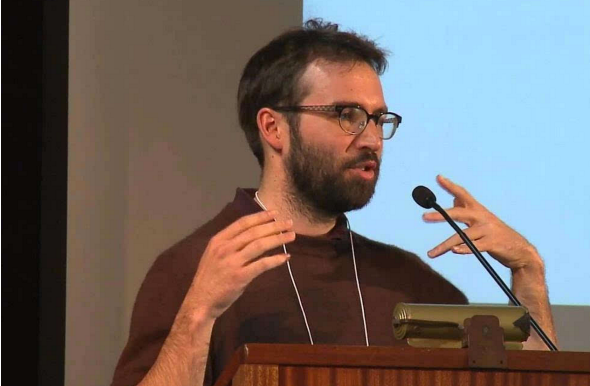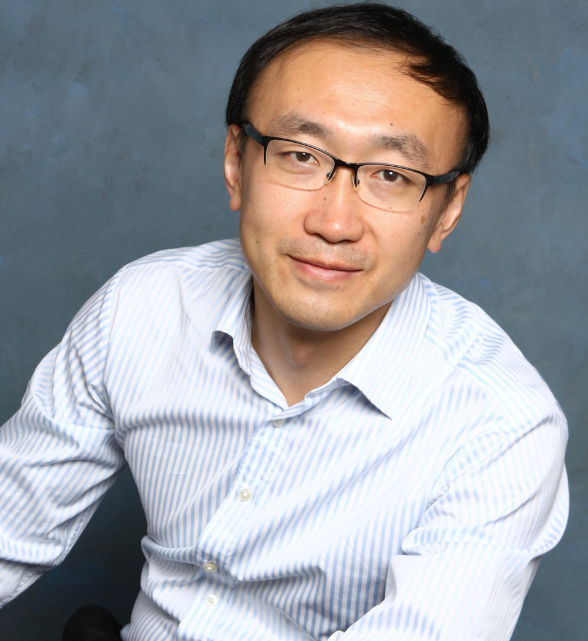在MesosCon Asia到来之际,IBM安排了对Mesosphere创始人- Benjamin Hindman和IBM杰出工程师-胡永刚的专访,请他们介绍了Mesos社区的一些热点问题。
Mesosphere创始人Benjamin Hindman对目前的工作,Mesos如何与Docker、Kubernetes和谐共存,Mesos的use case以及需要改进的地方分享了自己的看法。在对IBM杰出工程师胡永刚的采访过程中,他也详细介绍了IBM在Mesos社区扮演的角色,他表示IBM一直是Mesos的使用者,贡献者和支持者,他希望通过这次MesosCon Asia让Mesos能让更到的开发者使用从而促进整个Mesos社区的发展。CSDN作为本次大会的媒体合作伙伴,将会带来大会的全程报道,欢迎关注。以下是两位嘉宾的访谈详细内容。
Benjamin Hindman采访实录:
Can you please introduce yourself a bit especially your current work in Mesos community?
Hello! I’m Benjamin Hindman, co-creator of Apache Mesos and co-founder and Chief Architect of Mesosphere. I co-created Mesos as a PhD student at UC Berkeley where I worked on parallel systems and distributed systems. I was fortunate to be able to bring Mesos to Twitter and help build an “internal cloud” on bare metal machines using our own datacenters. While at Twitter I also had the fortune of working with companies like Apple, PayPal/eBay, Hubspot, and Netflix, amongst others, to help them be successful using Mesos. I’m still the PMC Chair of Apache Mesos (also known as the VP of Apache Mesos) but I spend more of my time working with committers on designing and architecting than I do coding. Although, whenever I get to code I still do! I recently helped with the implementation of the nested containerization primitive that can be used to deploy groups of containers as pods.
Why does Mesos community want to hold the MesosCon in China and what’s your and community’s expectation from it?
There are numerous contributors to the project from China as well as adopters of Mesos within various organizations and businesses. We wanted to help foster both the developer community and user community and we felt that a community held conference could help with that!
How can we build a healthy Mesos ecosystem and how to enable the Mesos ecosystem collaborating with other ecosystems, such as Docker, Kubernetes. Especially it seems the recent introduced features such as “Universal Containerizer” and “Pod” overlap with the features of Docker and Kuberentes?
Given the breadth of workloads that can be run on Mesos there are many opportunities to help build and expand the Mesos ecosystem. We’d love to see more cross-community engagements, for example, the Mesos community working closer with another open source project’s community to help make that project run well on Mesos. A great example of that is the work that we’ve started with the Apache Flink project. We’re excited to see more projects like this work well on Mesos!
The Mesos community is actively engaging with OCI as a way to collaborate with the Docker ecosystem. We also believe in defining, participating in, and driving new containerization “standards” such as Container Network Interface (CNI), Container Volume Interface (CVI) and more. Things like OCI and CNI are a practical path towards something like a POSIX for the datacenter that we believe the industry can move towards while still letting projects like Mesos innovate in ways that are best for the end users (e.g., building the universal containerizer).
Can you please share some typical use cases for Mesos? What Mesos can do and cannot do?
Mesos was designed with a two-level scheduling design specifically in order to enable it to run all kinds of workloads. If there is a specific workload that is difficult to run using existing Mesos schedulers, you can build your own! There a lot of members of the community that have done exactly this.
That being said, the most typical use cases are container orchestration, analytics (e.g., Spark), and data storage (e.g., Cassandra, Kafka, HDFS). We have many users that do both simultaneously, but we also have users that only run containers or only do analytics and data storage.
The Mesos community seems is not very diversity as we can see most committers are from Mesosphere. It is very difficult for other companies to contribute some new features if the feature is not treated as priority by Mesosphere. What’s your viewpoint on it?
The committers from Mesosphere go to great lengths to try and help folks from the community get their design documents written and their patches reviewed and committed, but they also recognize that they can do more, and I’m proud and humbled to see them working at this every day. The Mesos project has committers from numerous large organizations that use Mesos, but not all of those committers are as active in the community as Mesosphere.
Can you please list three key features that you want Mesos needs to be improved/added in near future and why?
Support for schedulers to use multiple hierarchical roles.
Priority Tiers to enable a different dimension of control for operators.
Cluster/Master federation to better manage multiple clusters potentially in different datacenters and/or clouds.
IBM杰出工程师胡永刚的采访实录:
Can you please introduce yourself a bit?
Hi, my name is Yonggang Hu Distinguished Engineer, Chief Architect for IBM Spectrum Computing. I have worked on distributed computing, grid, cloud and big data for the past 20 years, both as a developer/architect providing vendor solutions and as user/architect building distributed applications at a major US bank. I am passionate about using distributed computing solutions solving real world problems.
What is IBM role in Mesos community?
IBM is a leading user, contributor and supporter of the Mesos community. Firstly, IBM is a Mesos user. For some time now we have been using Mesos to run some of our Watson services in production, and we are also beginning to use Mesos as the resource management layer in some new products we’re working on. Secondly, IBM is bringing its many years of experience in enterprise resource/workload management and making key contributions to Mesos code. IBM has already become the second biggest contributor to the Mesos 1.0 release. We will continue to invest in Mesos around some key initiatives, such as Optimistic Offers, Kubernetes integration, universal containerizer & OCI support, etc. Last but not least, IBM supports the growth of the Mesos ecosystem and enables the adoption of Mesos among IBM clients. We are enabling/optimizing more applications in the Mesos ecosystem and adding necessary enterprise features.
Stay tuned! We have more to share at the upcoming MesosCon Asia.
Why IBM wants to co-chair MesosCon Asia in China?
Historically, IBM has been one of the biggest contributors to open source development, with huge investments made in projects such as Linux, Eclipse, and Spark. Developers across the company are encouraged to think open and contribute. As a matter of fact, IBM just passed the 1,000 mark for number of projects in GitHub.
Apache Mesos has become one of the most popular open-source resource managers in the market. We are very much aligned with many aspects of Mesos – the DCOS concept, two level scheduling, multi-tenancy, etc. With tremendous big data and cloud opportunities, China has already become a powerhouse for open source technology in these areas. We believe these kinds of conferences will increase the awareness and adoption of Mesos in China and foster the Mesos developer community.
What are the challenges to support some scale-out workload (Spark, Python, ML, DL, HPC) and how community evolves to support them?
One of key challenge is to efficiently and optimally place the workload according to resource requirements, workload priority, SLA, data locality etc. The community has come out with a few different schedulers, each with its own limitations and deficiencies. These are problems we have been dealing with for 20 years in our high performance computing and high performance analytics businesses. We know the answer is not as simple as a single-purpose scheduler. Data centers are complex, with heterogeneous equipment and even more heterogeneous workloads. To avoid bottlenecks, wasted resources and to maintain SLAs, you need advanced sharing capabilities. That is why we believe in the two-level scheduling architecture. At the base, you need a resource manager, like Mesos, that can keep track of the inventory, usage and health of your basic data center resources, and then you need another layer of purpose-built workload schedulers to optimize use of those resources within the context of an application and its priorities. These are lessons we learned long ago and where we feel we can greatly help the Mesos community and its adopters.
























 618
618

 被折叠的 条评论
为什么被折叠?
被折叠的 条评论
为什么被折叠?








